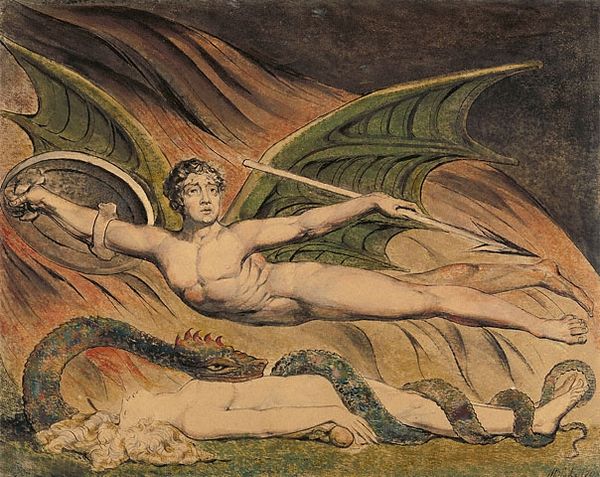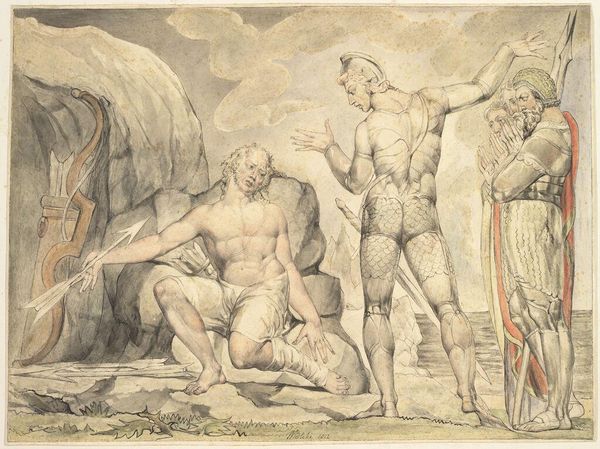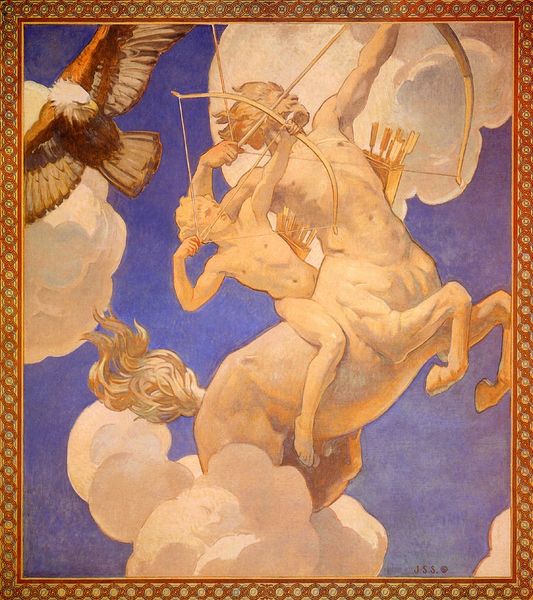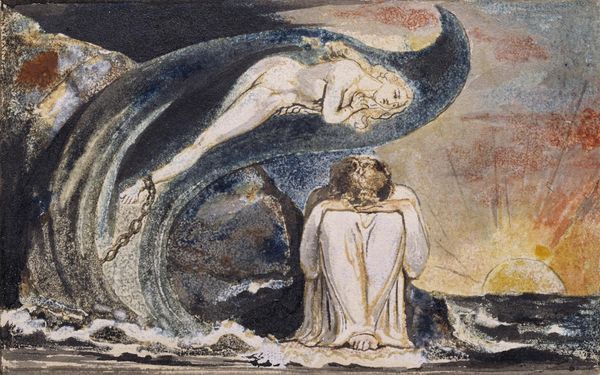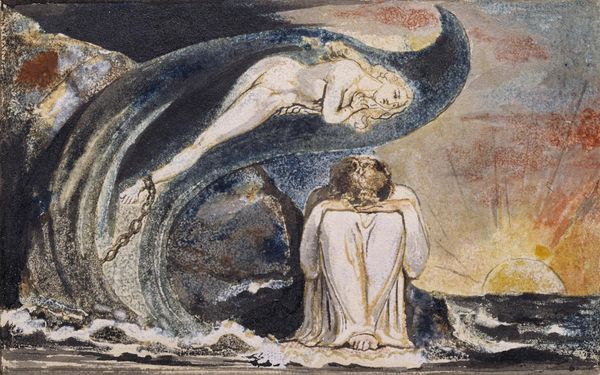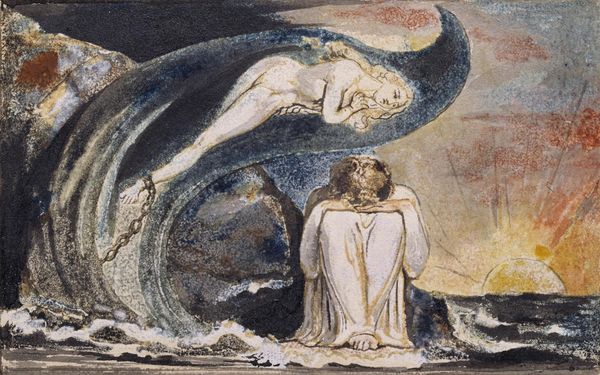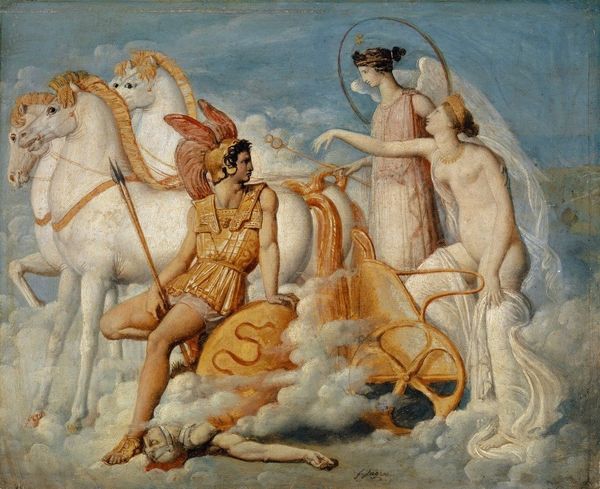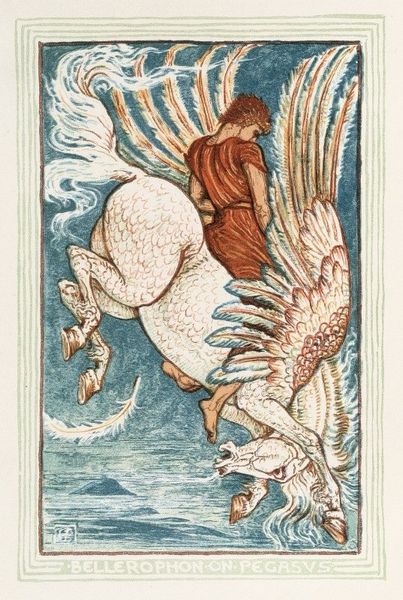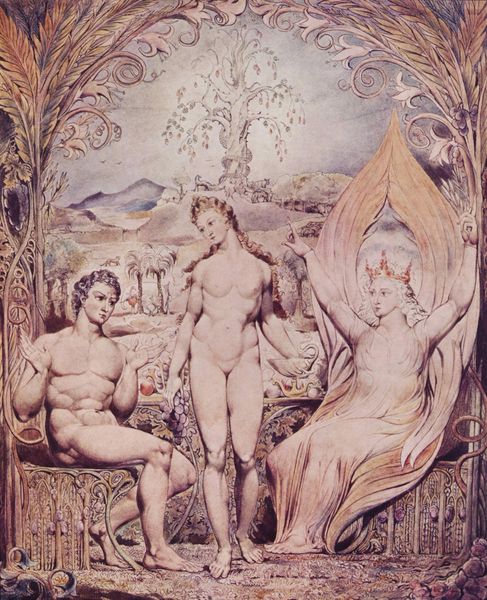
oil-paint
#
portrait
#
oil-paint
#
landscape
#
figuration
#
oil painting
#
scottish-colorists
#
symbolism
Copyright: Public domain
Curator: Let's turn our attention to a painting entitled "The Challenge," by the Scottish artist John Duncan. It’s an oil on canvas piece, notable for its symbolic and figurative elements. Editor: My first thought is how muted the palette is – all browns and creams. It gives the whole scene a kind of dreamlike, antique feel, almost like looking at a faded fresco. And that imposing sphinx dominates the composition! Curator: Absolutely. Duncan was deeply involved with the Symbolist movement, and that’s reflected here. The painting invites contemplation on themes of mortality, knowledge, and the tests we face in life. He exhibited regularly in the late 19th and early 20th century with strong associations with the Celtic Revival movement, focusing on Scottish myths and legends, making them extremely palatable for new emerging national art institutions. Editor: The medium is fascinating too. Oil paint gives Duncan a beautiful capacity for layering and blending. It almost feels like he's building up these forms – the rocky landscape, the figure of the youth, the sphinx itself – through a slow, deliberate process. Looking closely you can tell he didn't rely on smooth surfaces. This lends it a tactile, handmade feel. Curator: And don't forget the Sphinx. Duncan’s rendition links back to classic depictions in Greek mythology as well as being heavily coded with turn-of-the-century theosophical fascinations, offering a challenge that determines life or death. The depiction, also, gives viewers an idea of power, history, and intellectual might of ancient art, but places this figure at odds with youth. Editor: What I see is a representation of the choices inherent in life: to strive or to succumb. Look at the positioning – the youth is almost hesitantly stepping forward to confront destiny while seemingly taking on his 'materialist' burdens in that step from seashell to rock. There's something subtly subversive here when thinking about making art with materials in the shadow of cultural history. The surface is relatively plain, drawing focus on how the maker might value skill itself as art, perhaps asking viewers to meditate on that very material reality, versus engaging more publicly with cultural histories as museums sought at this time. Curator: It is definitely one of his more interesting pieces of his exploration of culture as a space where private symbolic languages speak loudly in public institutional spaces, don't you think? Editor: Yes, but the challenge also sits in thinking about the 'challenge' itself to those of us making art. Thank you.
Comments
No comments
Be the first to comment and join the conversation on the ultimate creative platform.

